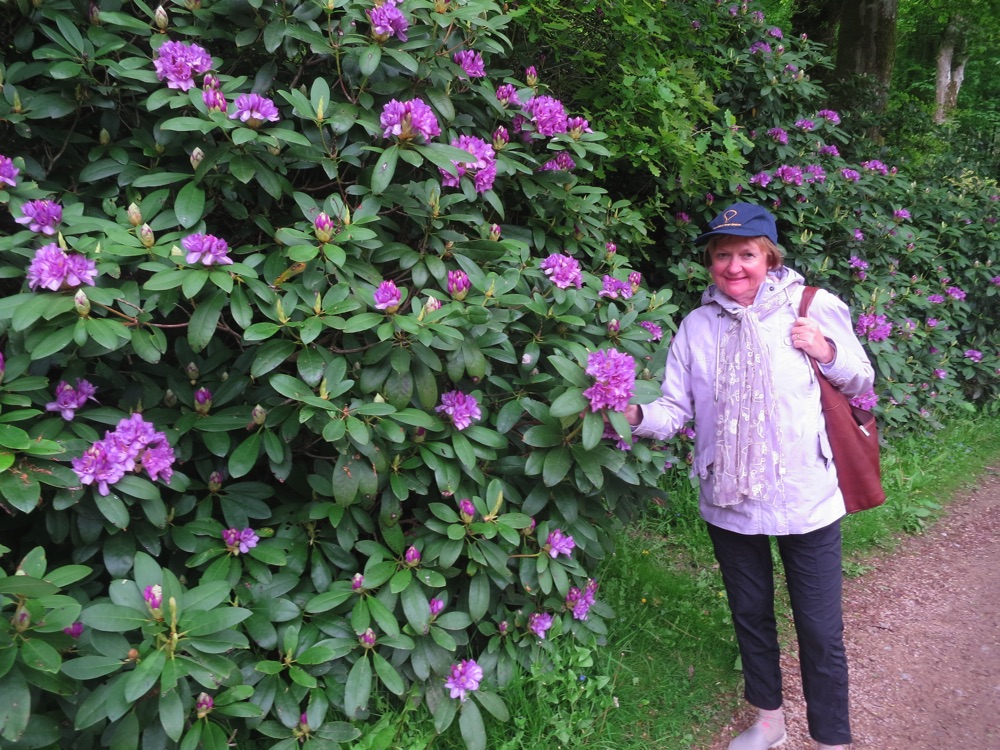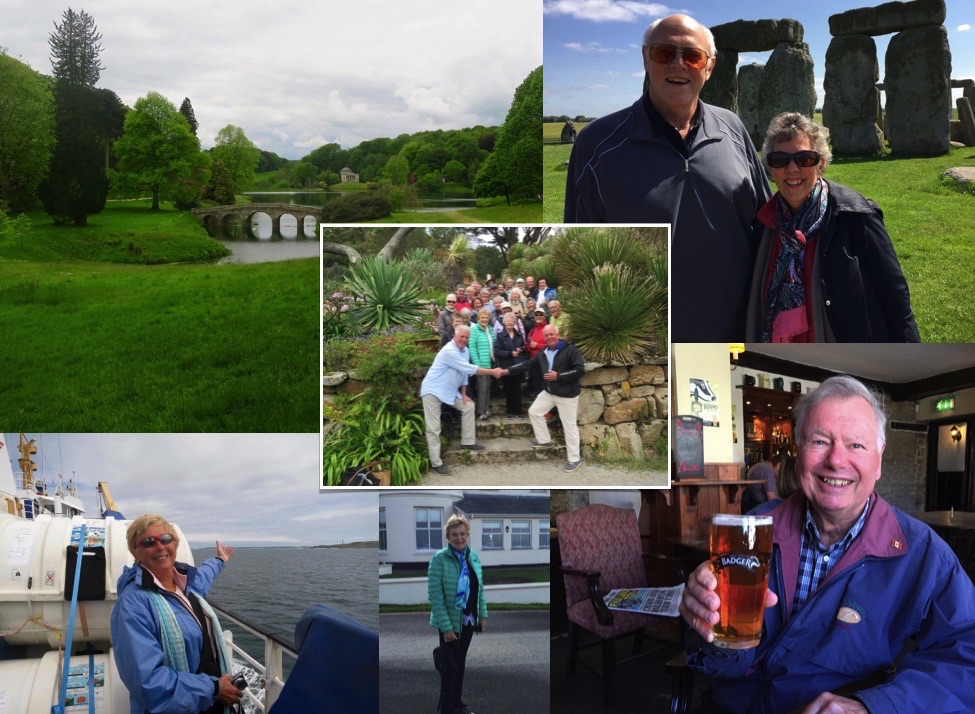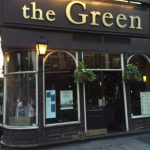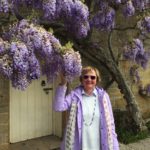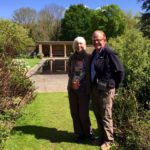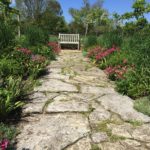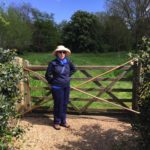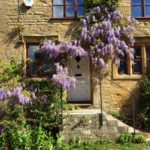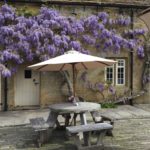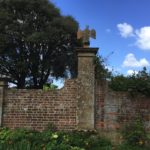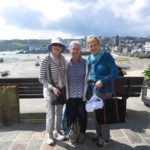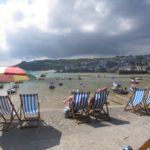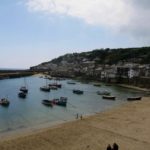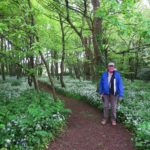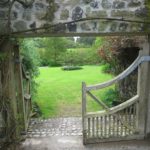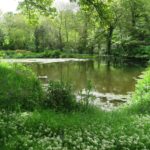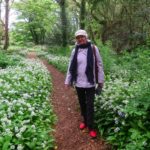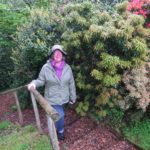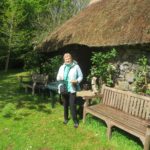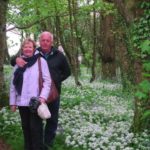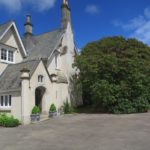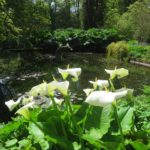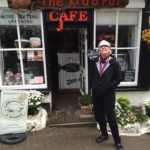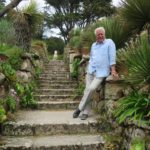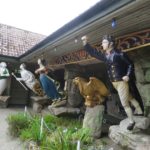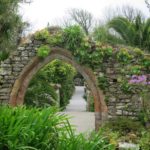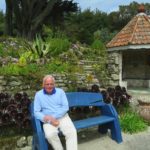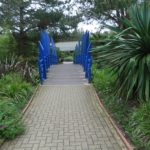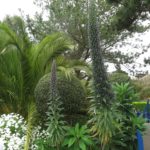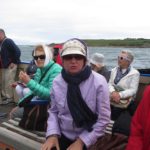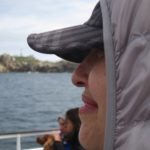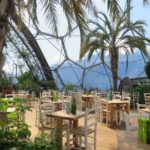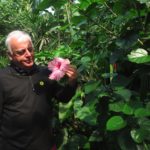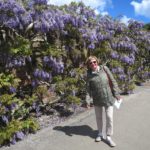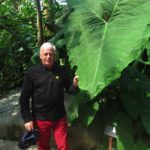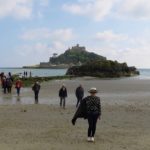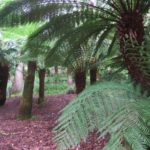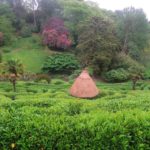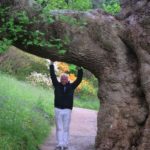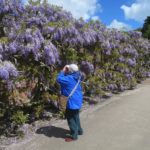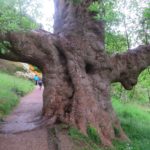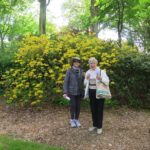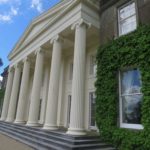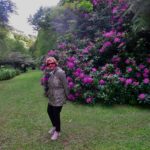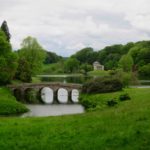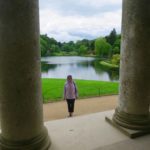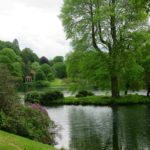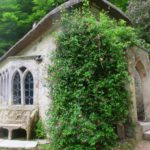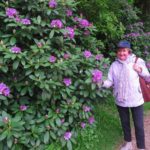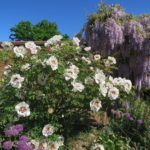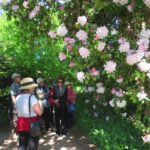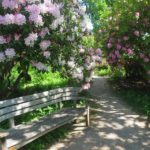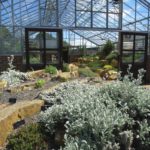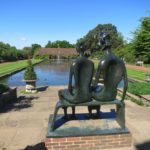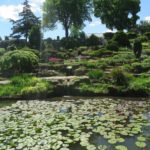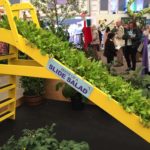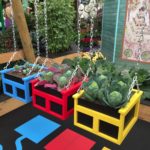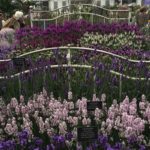In May, 2016, I was in Shepherd’s Bush, London, meeting people at our hotel there to start a 12-day tour to the West Country and the Sicily Isles before returning to London for the Chelsea Flower Show.
The goal of the tour was to spend as much time exploring the beauty, as well as historic and cultural wonders of the West Country, especially Somerset and Cornwall.
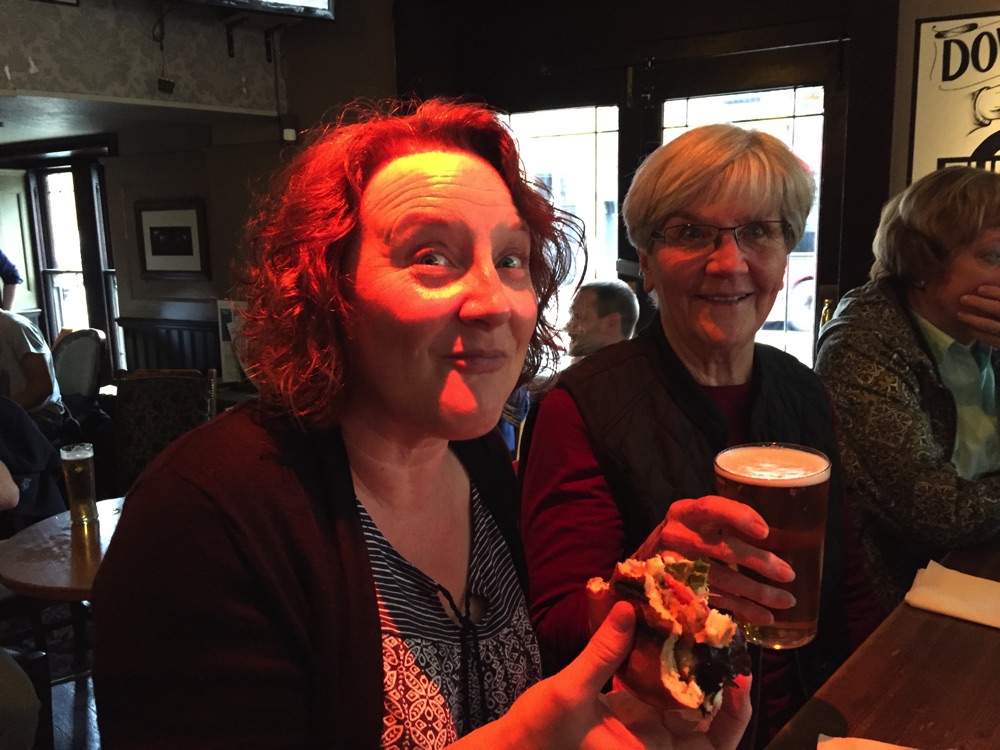
On the way down to Somerset, we stopped at Stonehenge, which we found had been turned into a top notch tourist destination with a terrific new visitor reception-cafe-museum. This had a very swish design and fit perfectly into the sweeping panorama of the Salisbury Plain.
The storytelling at this world class heritage site – now called a “temple” aligned to the motions of the sun – was impressive with superb audio guides and a 360 degree video on how-it-all-came-about.

From Stonehenge, we made our way into Somerset, stopping on the way at Mere for a pint in the pub there and a little wander around the pretty town where we found a charming garden shop that felt like step back in time to the 1950s.
It was only a short ride from there to our first garden – East Lambrook, built by Margery Fish in the 1940s in Kingsbury Episcopi, outside Yeovil, Somerset.

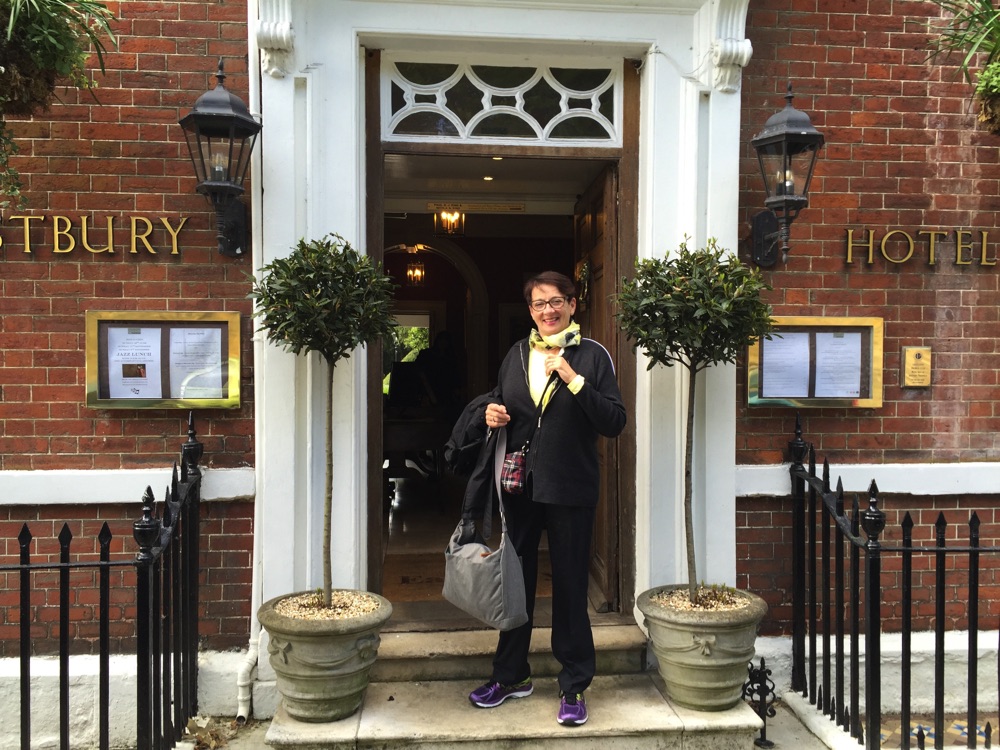
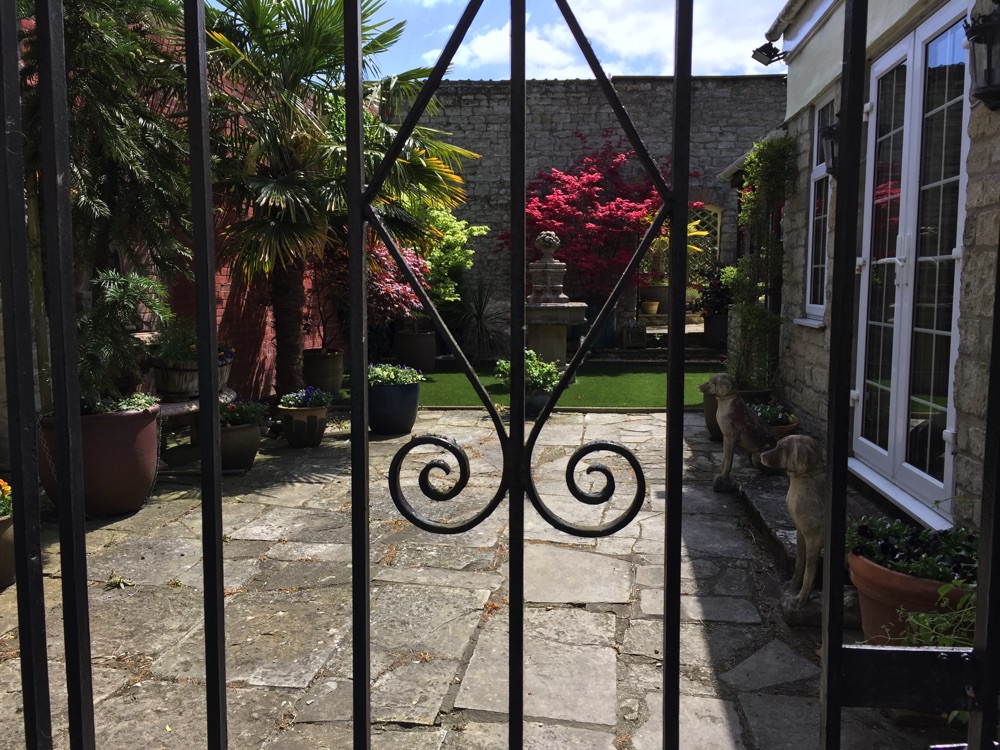
This small but beautiful private garden was made popular by Fish after she wrote a book about building it with little help from her uncooperative husband, Walter, then a retired editor of the Daily Mail.
Margery’s book, We Made A Garden, was not just a story about her successes and failures as a hobby gardener, but also about the challenge of working with her curmudgeonly husband.
The garden was a big hit, especially with lovers of perennials and other hardy plants, including lush plantings of columbines, hellebores and hardy geraniums as well as wonderful sculptured conifers and clipped lonicera hedges.
We got to see it on a beautiful, sunny Saturday afternoon. Somerset never looked more lovely or felt more tranquil.
I lived in Somerset for a short time in the early 1970s when I was the South-Somerset/North Dorset correspondent, based in Yeovil, for the Bristol Evening Post. I had visited East Lambrook back then as a young reporter but had no appreciation of its importance. That was also true of my attitude towards Tintinhull, another important Somerset garden, which we also visited on this tour.
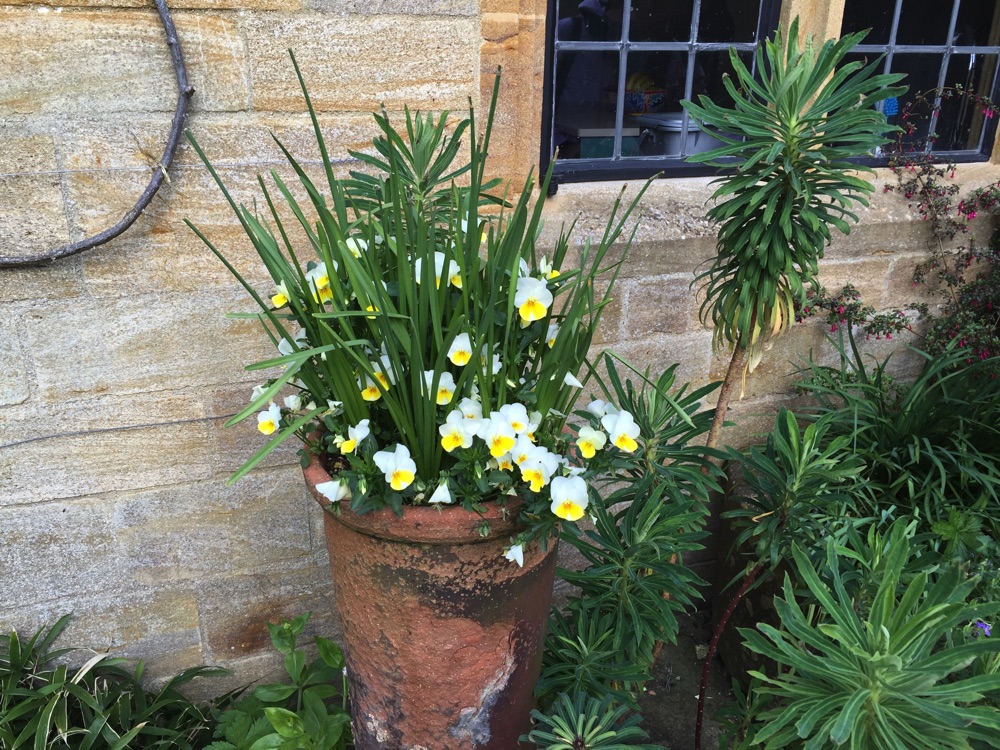
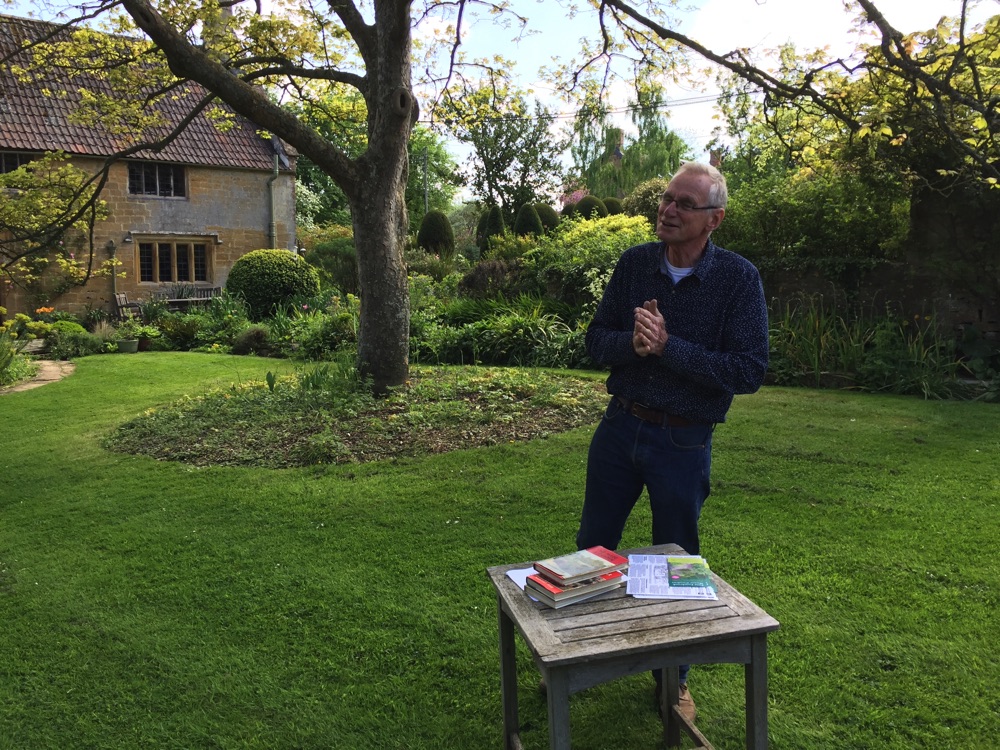
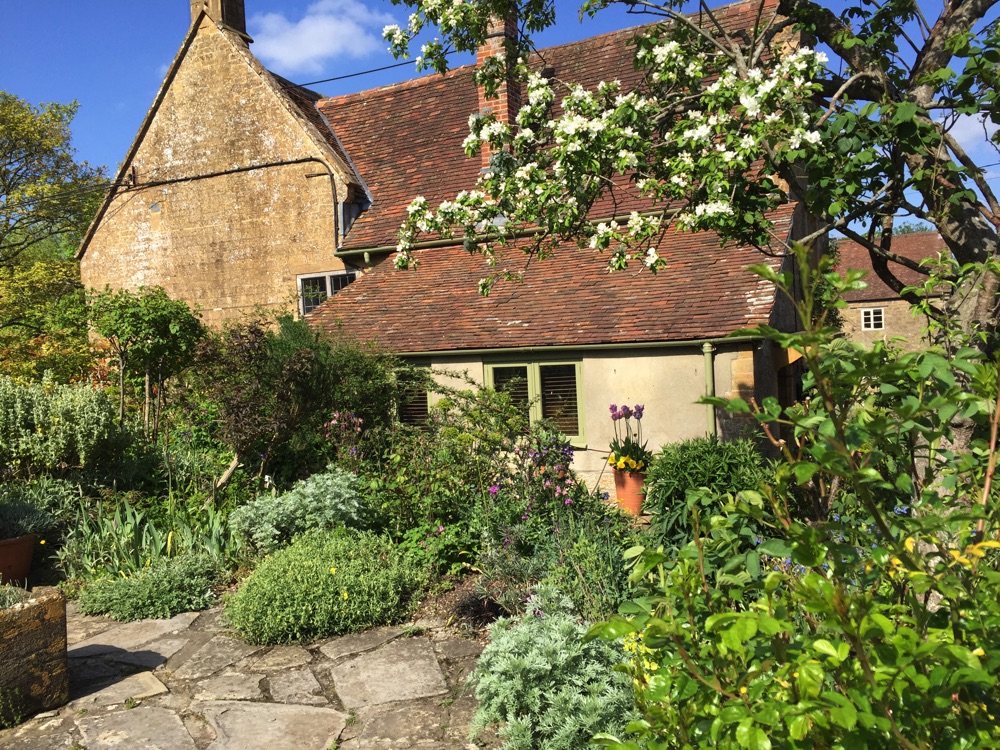
Everyone had a fabulous time walking at leisure around East Lambrook. We found the garden divided into specific room areas – silver garden, white garden, terrace garden, orchard, the ditch and the lawn areas.
We were also lucky to have owner, Mike Werkmeister, give us an introductory talk and he also walked with us and explained new developments and plantings and answered questions.
From East Lambrook, we went to Sherborne, Dorset where we stayed for the night at The Eastbury Hotel, a lovely hotel with delightful rooms and a good garden of its own.
There was plenty of time after check-in to wander the garden and to amble into Sherborne and see more of the town with its pretty houses.
The next day, we left Sherborne and made the short trip to Tintinhull Garden, on the outskirts of Yeovil.
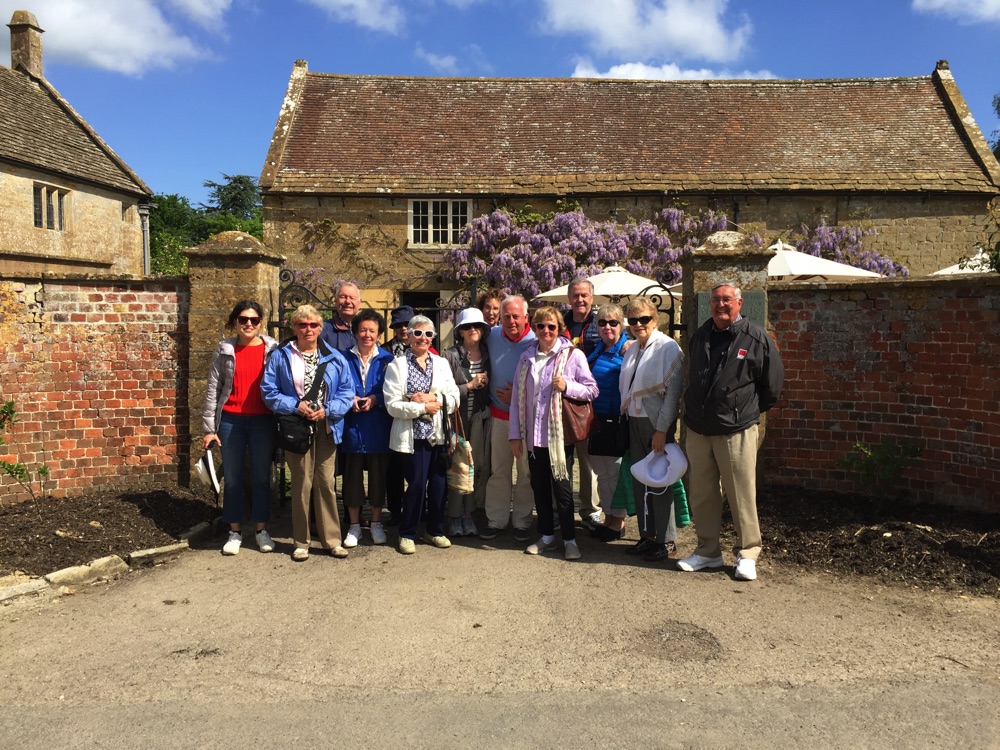
Since the garden didn’t open until 11 am we wandered around the village for a while and chatted with residents and looked at their lovely gardens. Wisteria was growing everywhere in the village. It almost seemed as if it were a requirement of being a local that you had to grow wisteria over the facade of your house. Tintinhull, now a National Trust garden, was built between the wars by Phyllis Reiss who died at the age of 28 in 1961. But the garden did not hit the radar of the gardening cognoscenti until it was taken on by Penelope Hobhouse, one of Britain’s most respected garden gurus. She lifted the garden to new heights of excellence and made a name for herself.
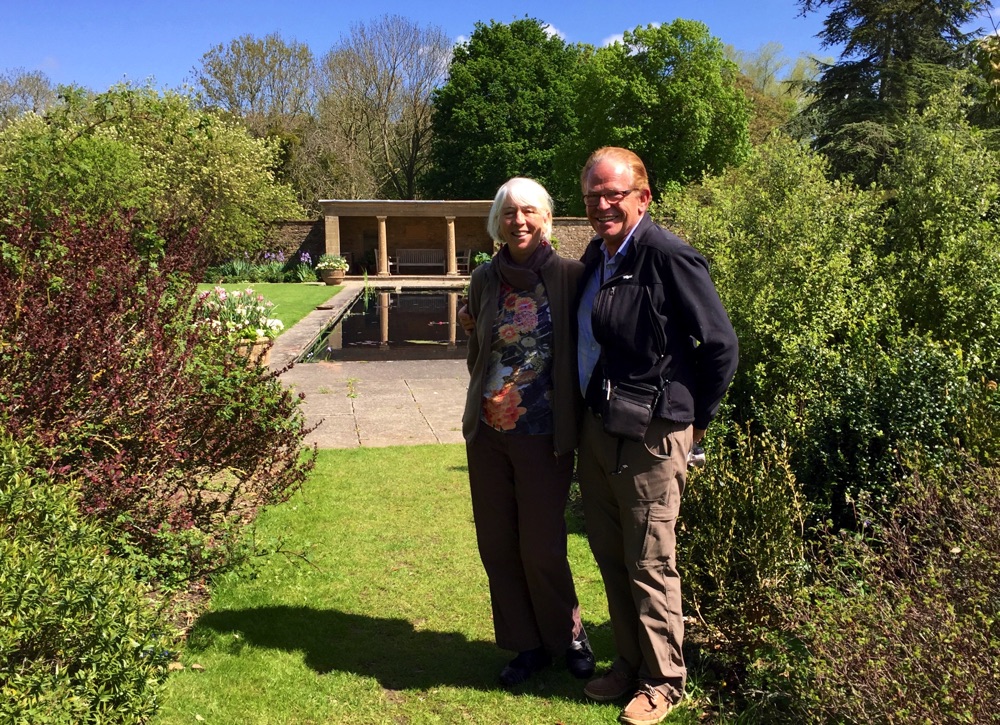
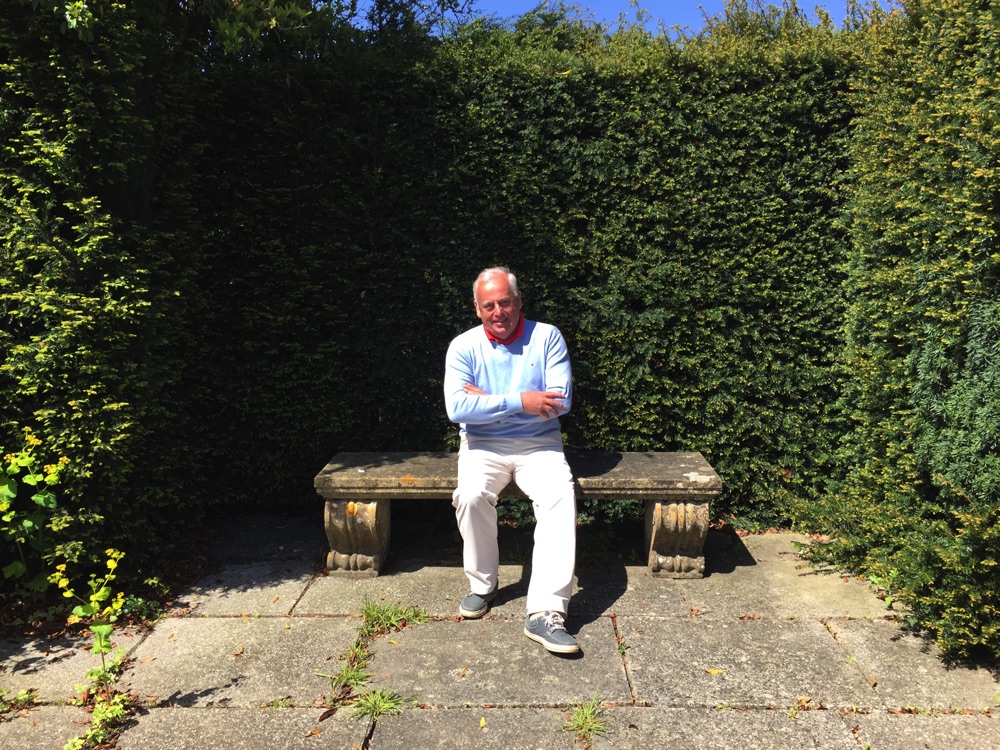
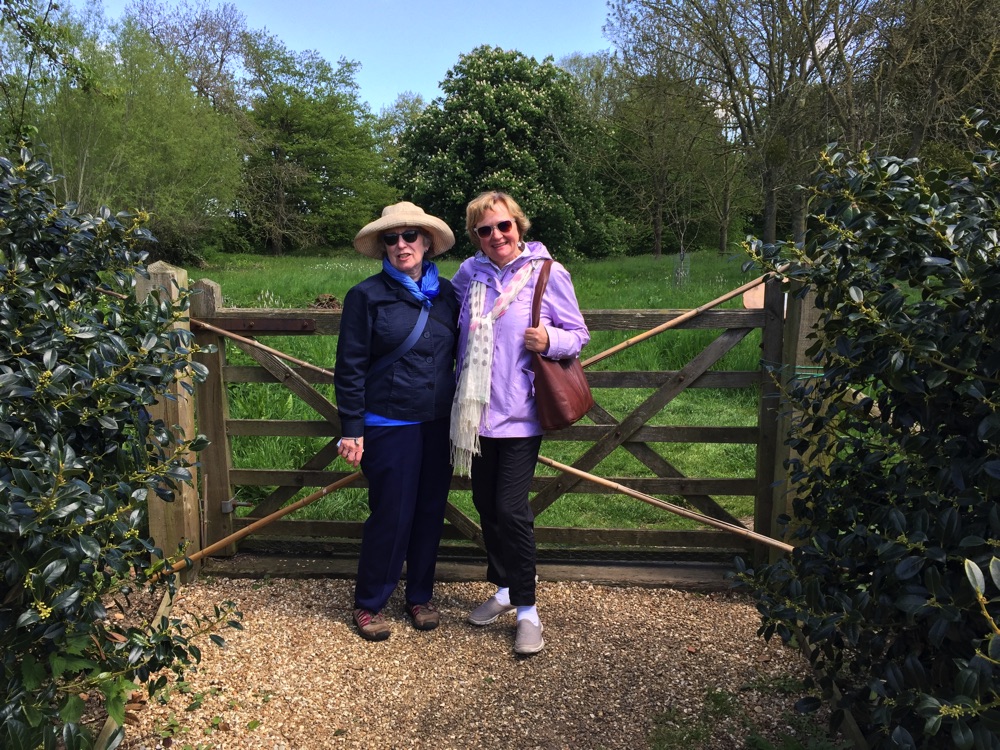
We first looked around the house before stepping outside into the garden and wandered into what is better known as Eagle Court because of perched eagle statues.
The stone path there was lined by immaculately clipped golden yews and led into the Middle Garden and on into the Fountain Garden with its circle pond.
We all admired the way Tintinhull made the most of views and key features and elegantly framed them with neatly clipped hedges or holes cut strategically into the hedges to create glimpse views.
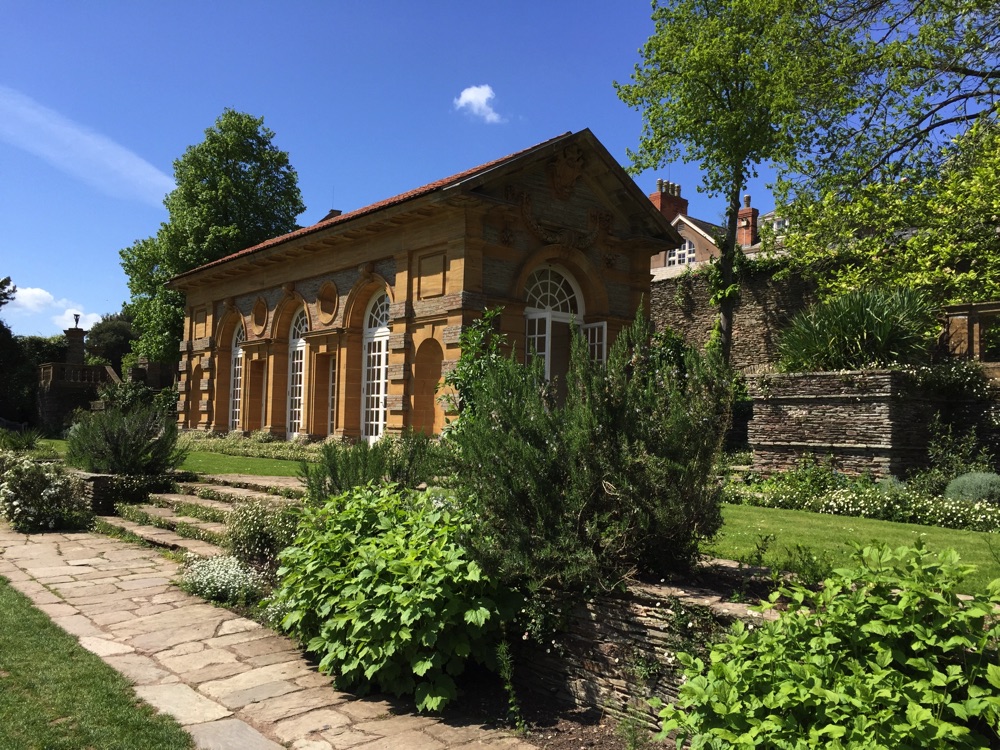
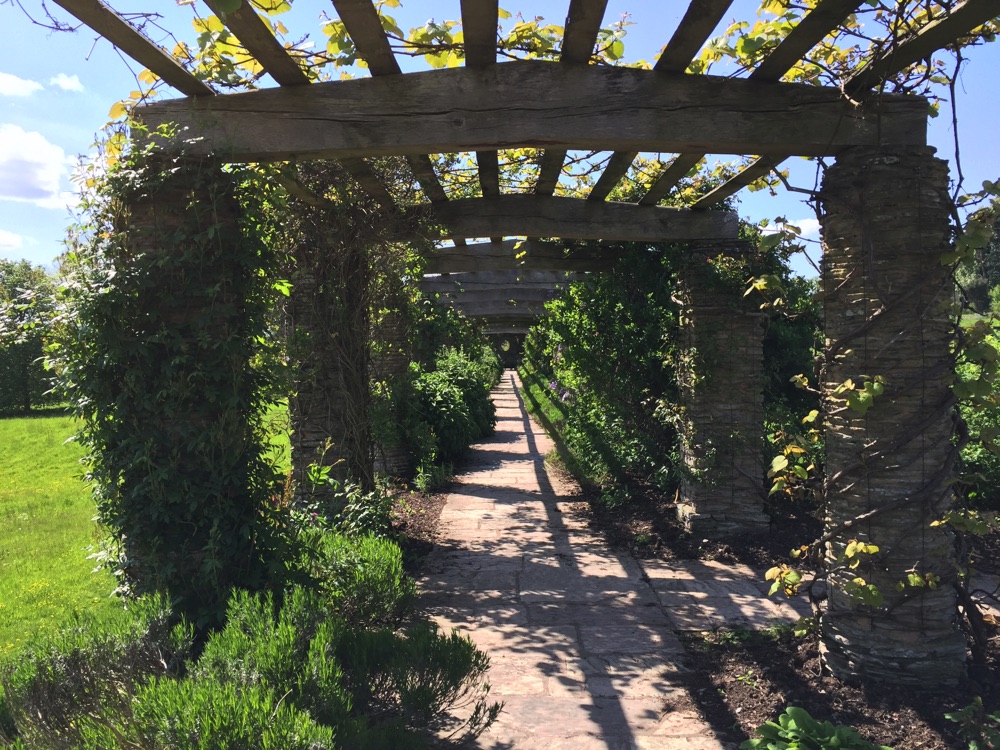
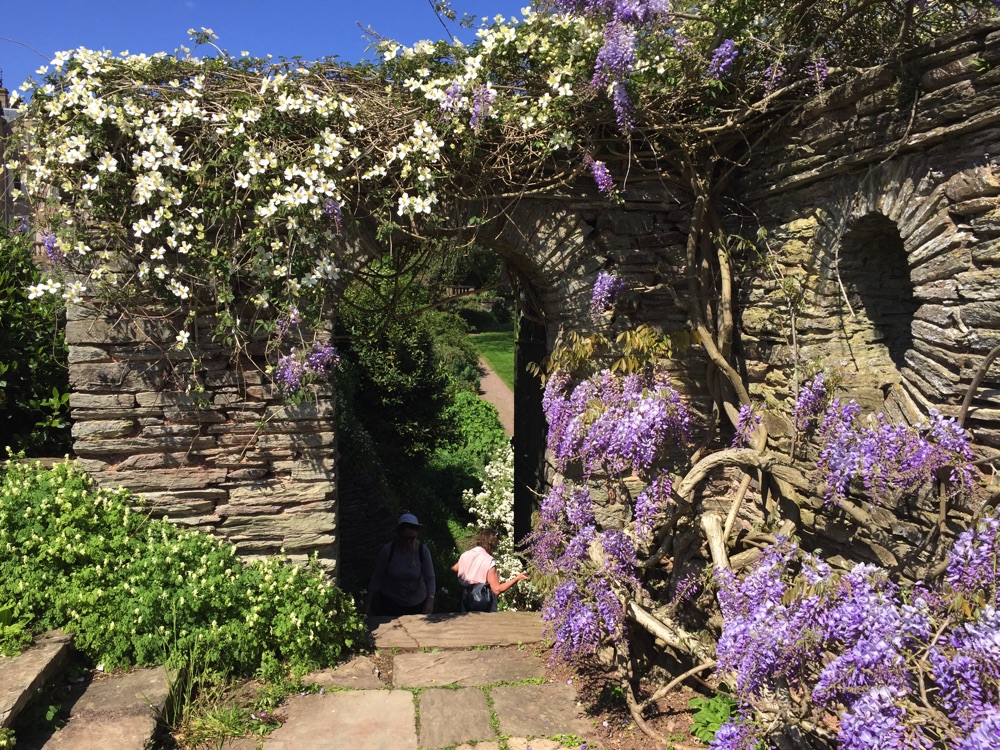
We all left feeling very happy and wandered back through the village before continuing on our way to Hestercombe Garden.
Before touring Hestercombe, we had lunch in the dining room with antique 19th century portraits on the walls and great views out the windows.
The garden is still famous for design work by Sir Edwin Lutyens, regarded as one of Britain’s foremost architects, and someone who worked with plant guru Gertrude Jekyll.
I thought the best plan of action was to start by seeing the formal garden in front of the house followed by a jaunt into the wilder, woodland section at the back of the house.
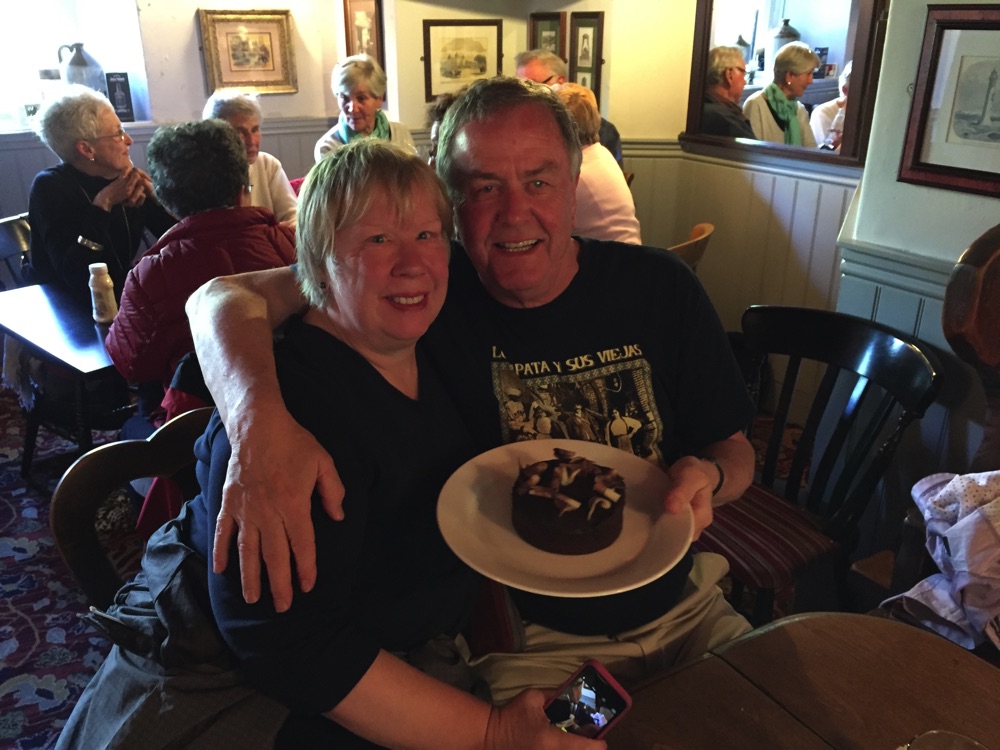
But Ben, our guide, thought it better to do the tour in reverse, so we walked into the more rustic, woodland area first, seeing the pear-shaped lake and hillsides dotted with sitting viewing spots.
We wandered past the cascade and came back down the ravine to the house and the formal garden.
Here we found superb stone steps stuffed with daisies and a wonderful terrace garden with Jerusalem sage and beds ringed by lamb’s ear.
Lutyens apparently wanted to make space for water wherever possible and added long channels stretched the entire length of the garden. We found massive Mexican orange blossom bushes in full bloom as well as clumps of iris and red valerian.
At the bottom of the garden the long pergola was smothered in vines and opened to spectacular views of the Somerset countryside.
My favourite corner of the garden featured an arched doorway with wisteria on one side and clematis on the other and crevices in the walls stuffed with corydalis. I have always liked the window-like openings in the stone wall that frames views of the garden beyond.
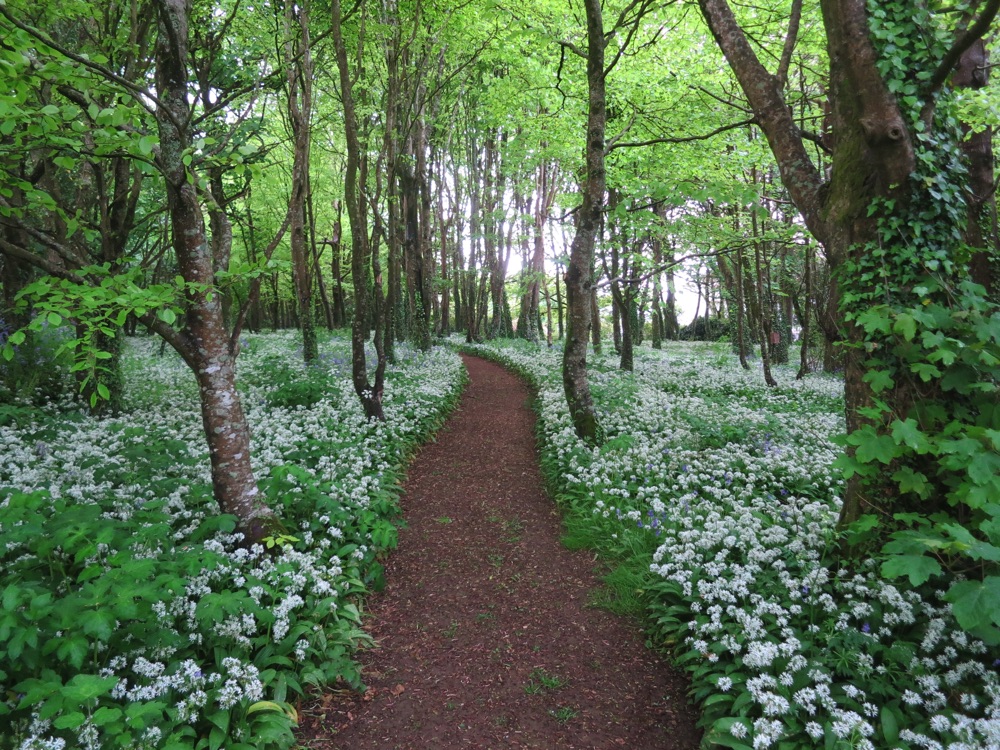
From Hestercombe, we moved on to Cornwall, stopping on the way at the Jamaica Inn for a pint.
Not long after, we settled into our hotel in Mullion Cove, which was our base in Cornwall for the first few days.
We started by visiting Bonython Manor Garden, south of Helston on the Lizard Peninsula, where we were delighted to be greeted by one of the most beautiful woodland entrances I have ever seen with the ground covered with a glorious carpet of bluebells and the indigenous white-flowering onions. The combination under the light canopy of maple trees created a spectacular first impression.
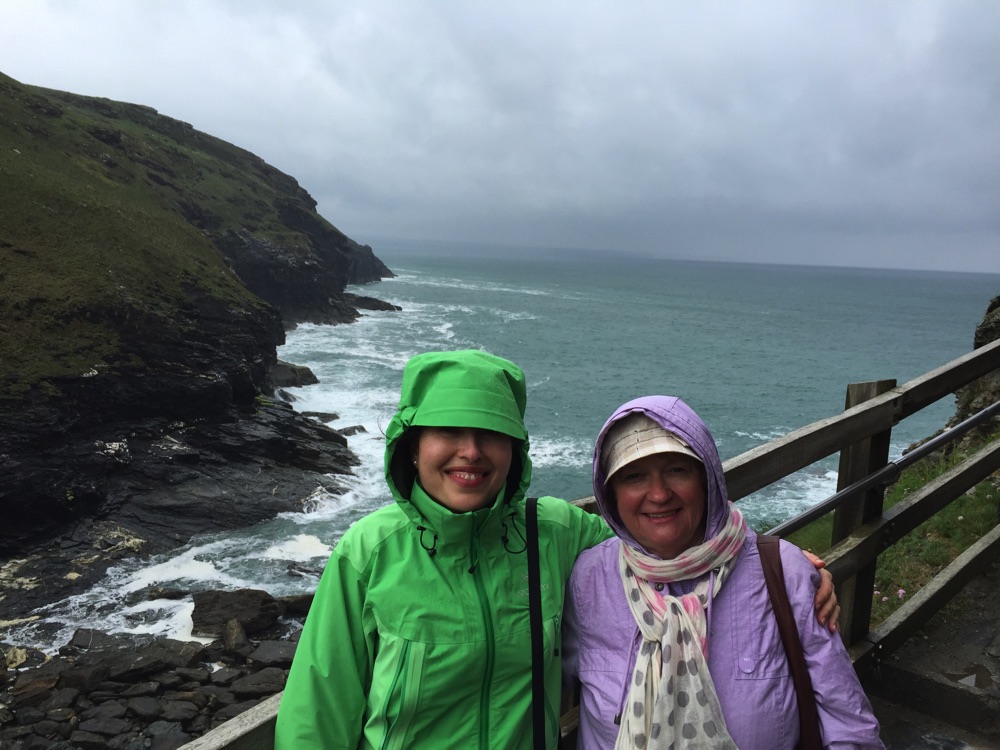
The eight-hectare (20-acre) garden was part of the 18th century Georgian manor house. From the romantic woodland, we moved into the potager garden and down to the first of three lakes where we found a huge stand of gunnera reflected beautifully in the mirror-like lake.
The walk around the second lake made the biggest impact with dense drifts of bronze grasses on the sunny bank and rhododendrons and azaleas tucked under into the dappled shade of trees.
From Bonython, we went to 15-acre Trewidden Garden, famous for its azalea, rhododendron and magnolia collections as well as spectacularly large and old specimens.
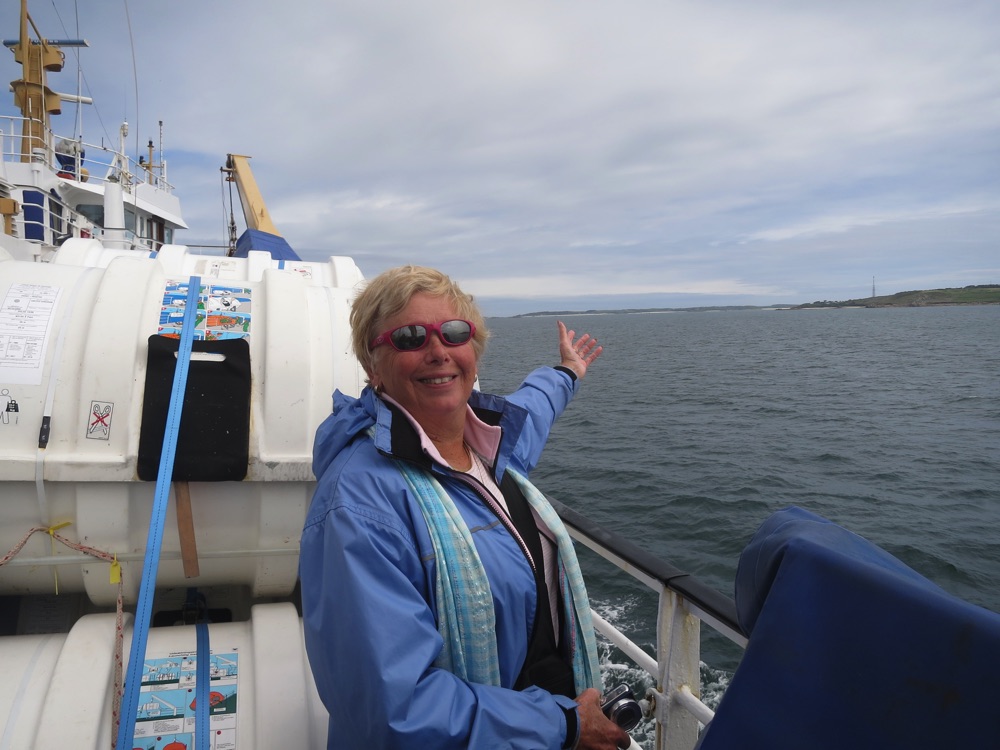
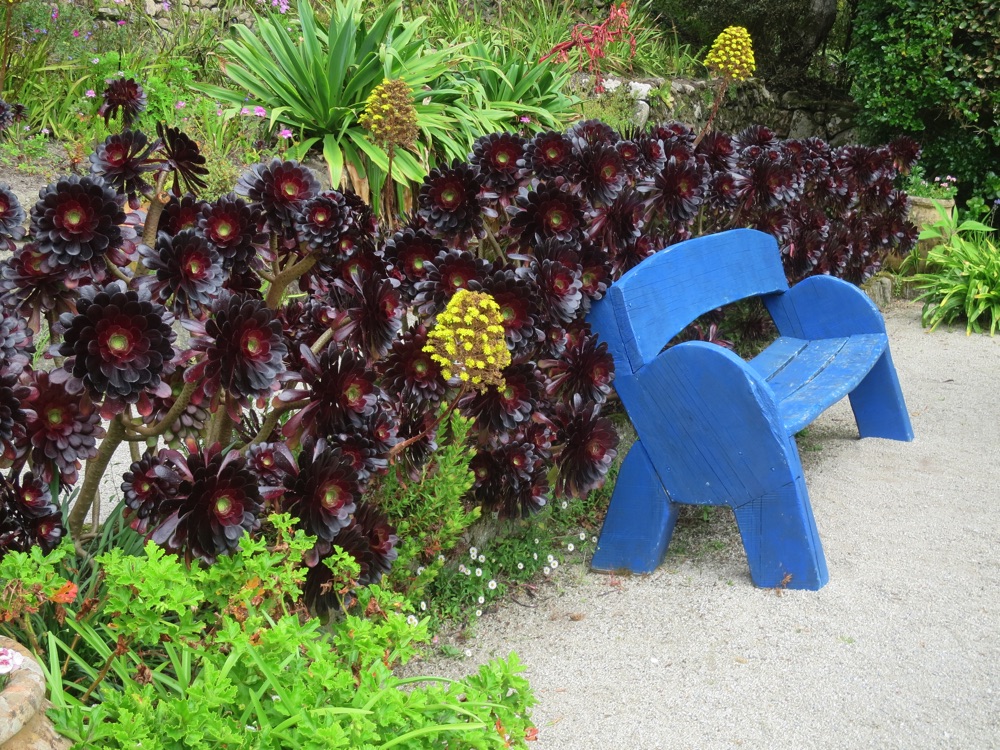
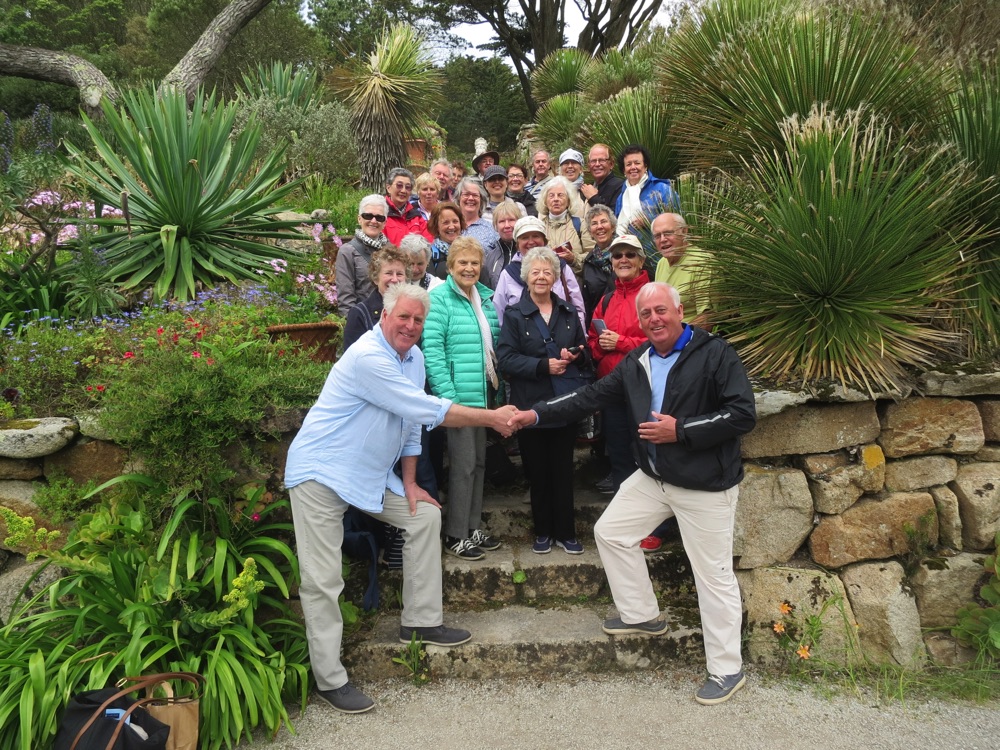
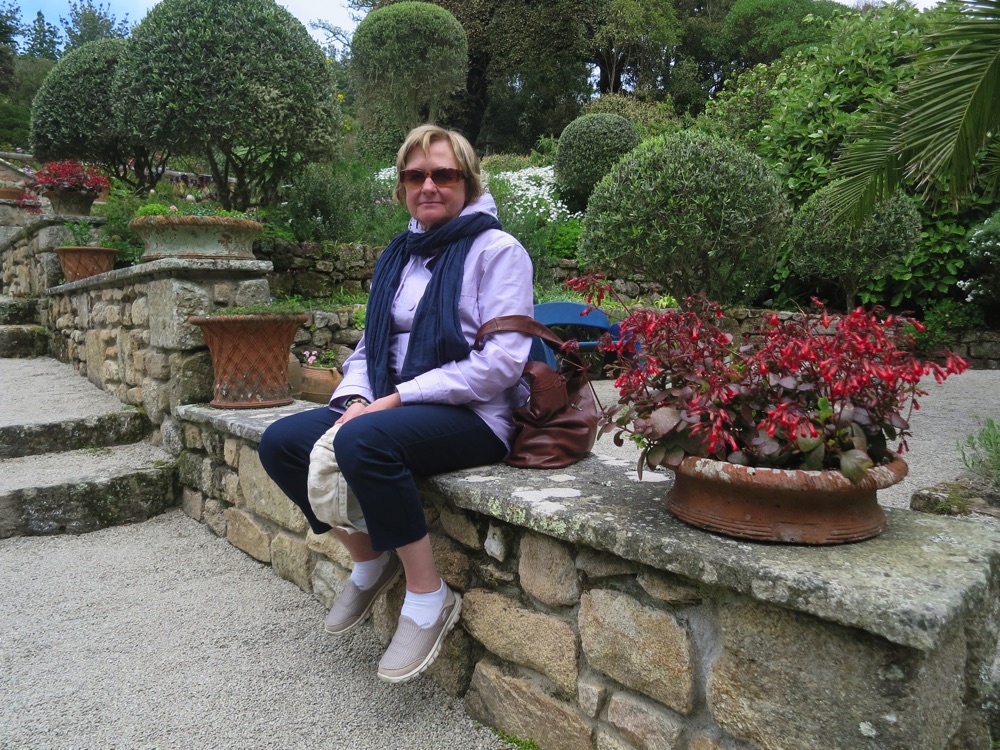
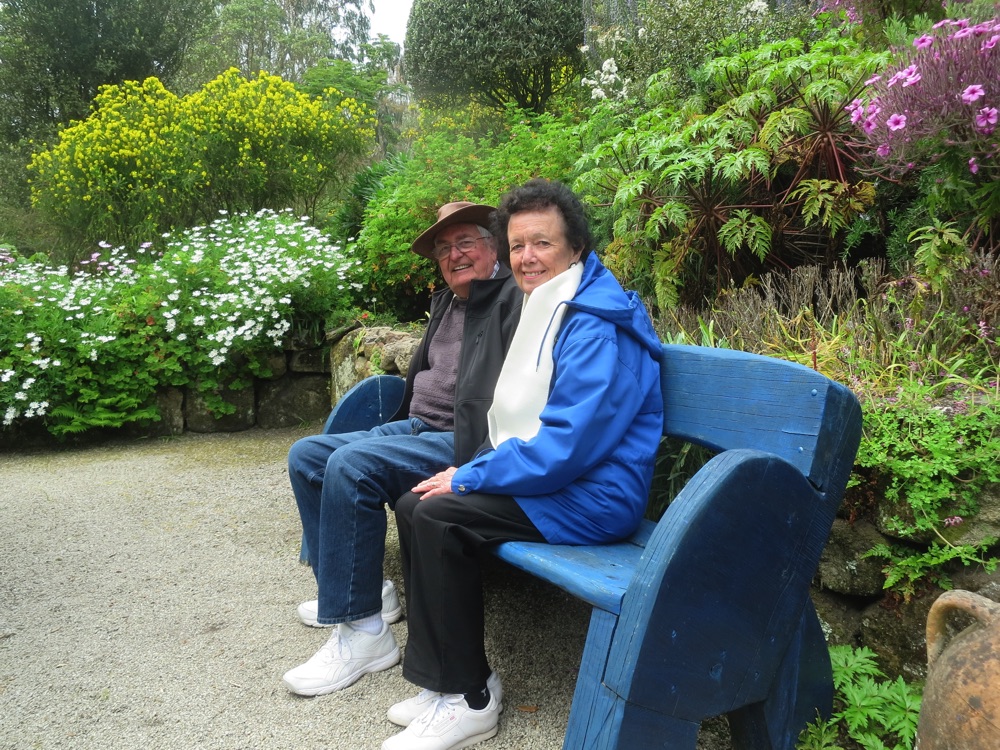
The garden is one of Cornwall’s oldest estate gardens, created in the 19th century by tin baron Thomas Bolitho at a time when garden making and rare plant collecting was all the rage.
We were guided around by head gardener Richard Morton, an excellent teacher who explained among other things the difference between English and Spanish bluebells and told us stories about some of the garden’s more exotic specimens such as the massive jelly palm and immense Magnolia x veitchii ‘Peter Veitch’.
Trewidden is famous, too, for its fern dell, featuring scores of Tasmanian tree ferns, all scattered in a sunken area around a gigantic Magnolia sargentiana robusta.
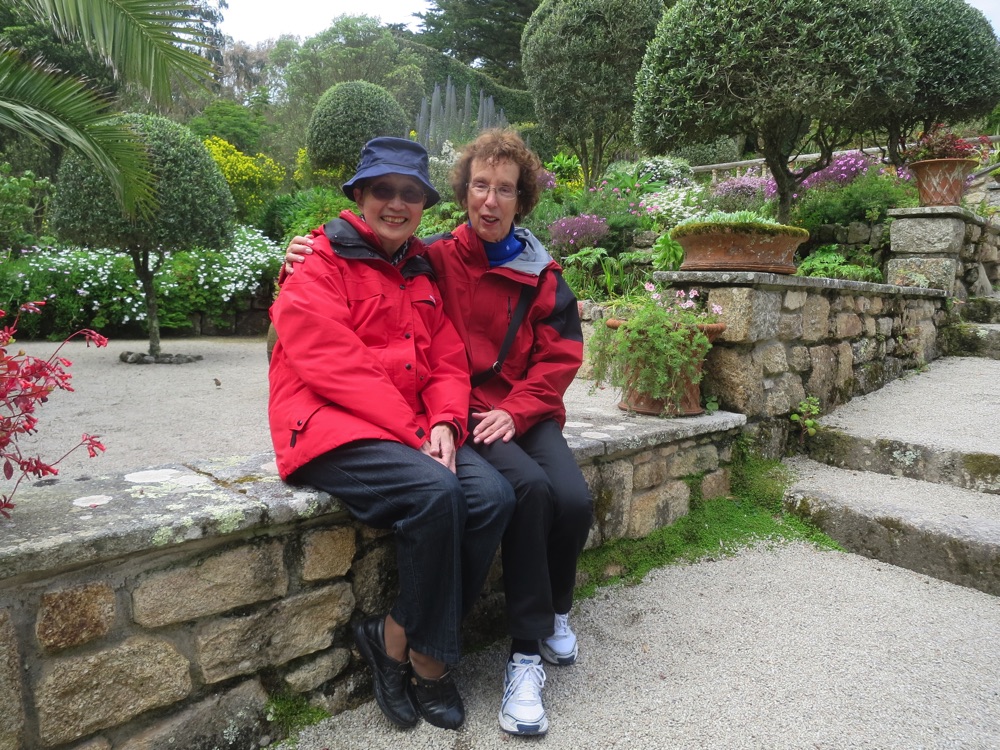
From Trewidden, we next went to Tremenheere Sculpture Gardens, a wonderful ravine garden with all sorts of exotic, tender and subtropical plants plus large and original works of art scattered through the landscape.
The combination of these elements meant that we not only got to see some amazing plants and works of art but also got a great workout hiking up to the peak of the ravine from where we could see St. Michael’s Mount and back down again. On the way, we passed original art installations by artists from all around the world.
Back in Mullion, we ensconced ourselves for dinner in the the local pub, The Old Inn, with its beautiful thatched roof.

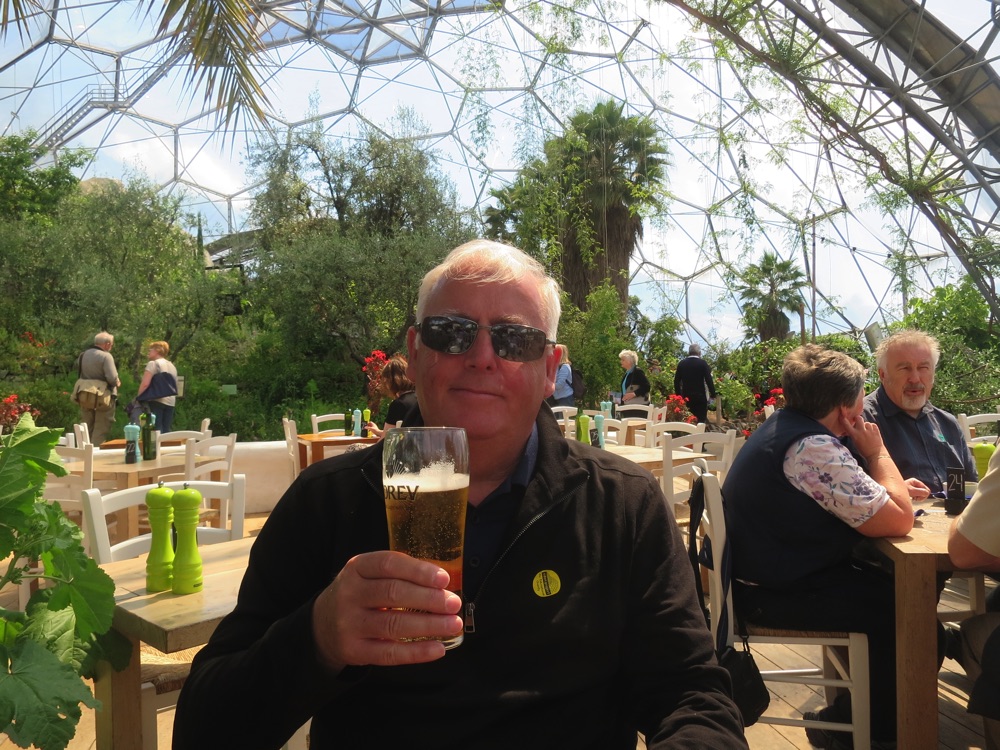
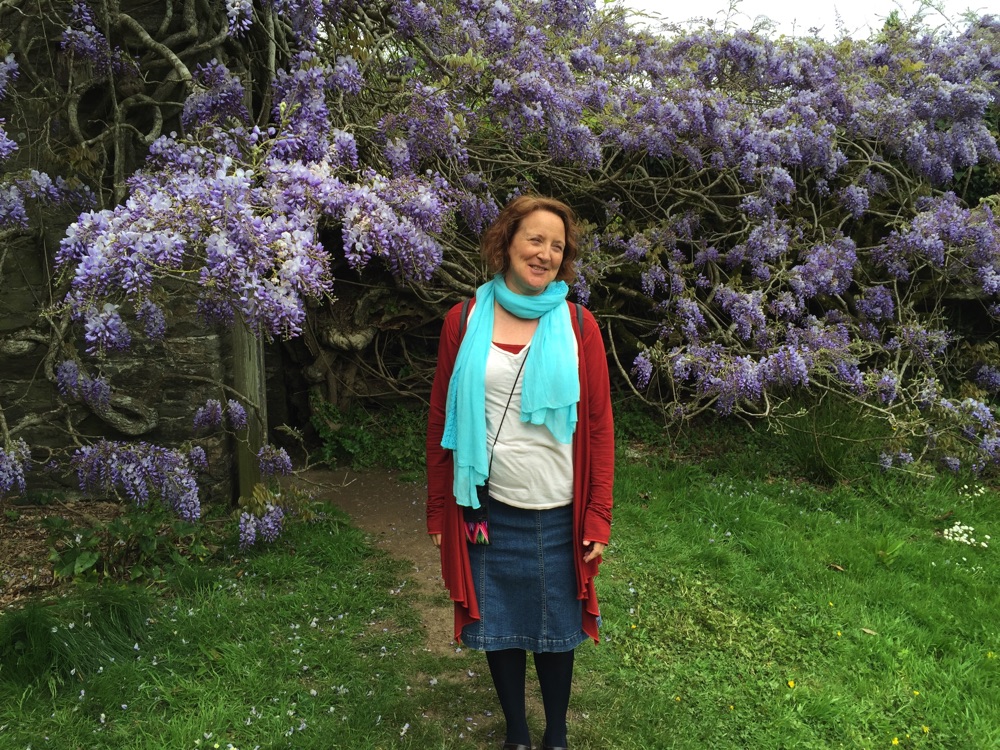
From Mullion Cove, we moved to Budock Vean, 13 hectares of Cornish gardens next to the Helford River from where we were able to easily visit two of the great gardens of Cornwall – Trebah and Glendurgan, fabulous ravine gardens located side by side.
We also visited Fowey, one of the prettiest fishing villages in the county and an inspiration for writers such as Daphne du Maurier (Frenchman’s Creek), went to the ultra-romantic Lost Gardens of Heligan as well as the innovative Eden Project, both located outside of St. Austell.
But Trebah and Glendurgan, two amazing subtropical gardens created by the Fox brothers in the 18th century, will remain forever among my most favourite garden visits. They were wonderful.
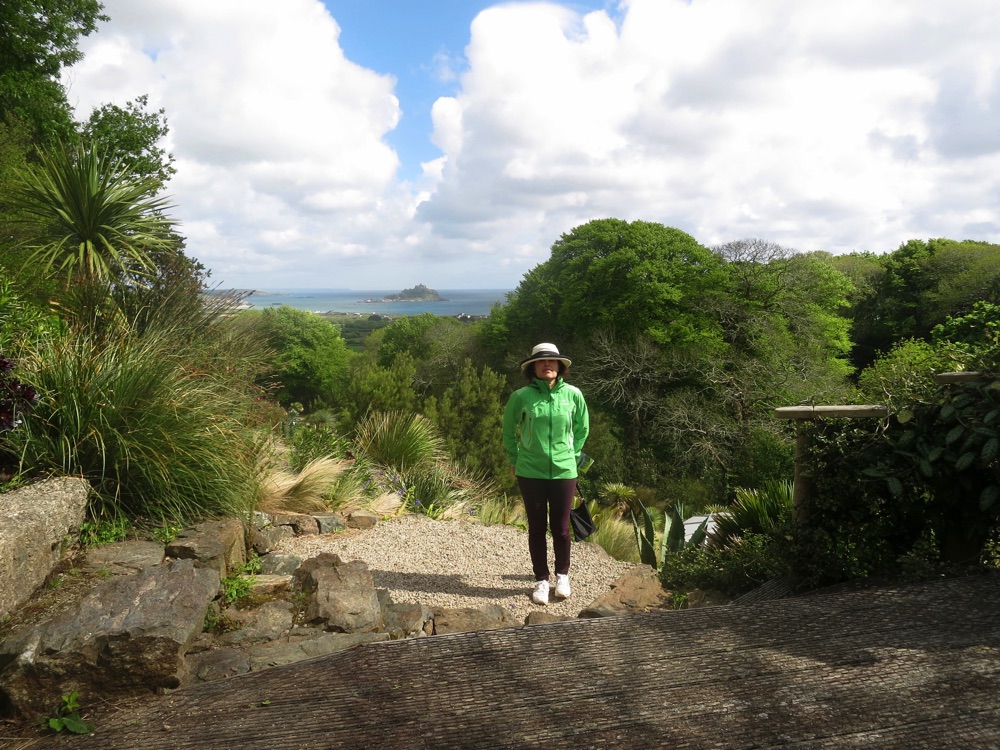
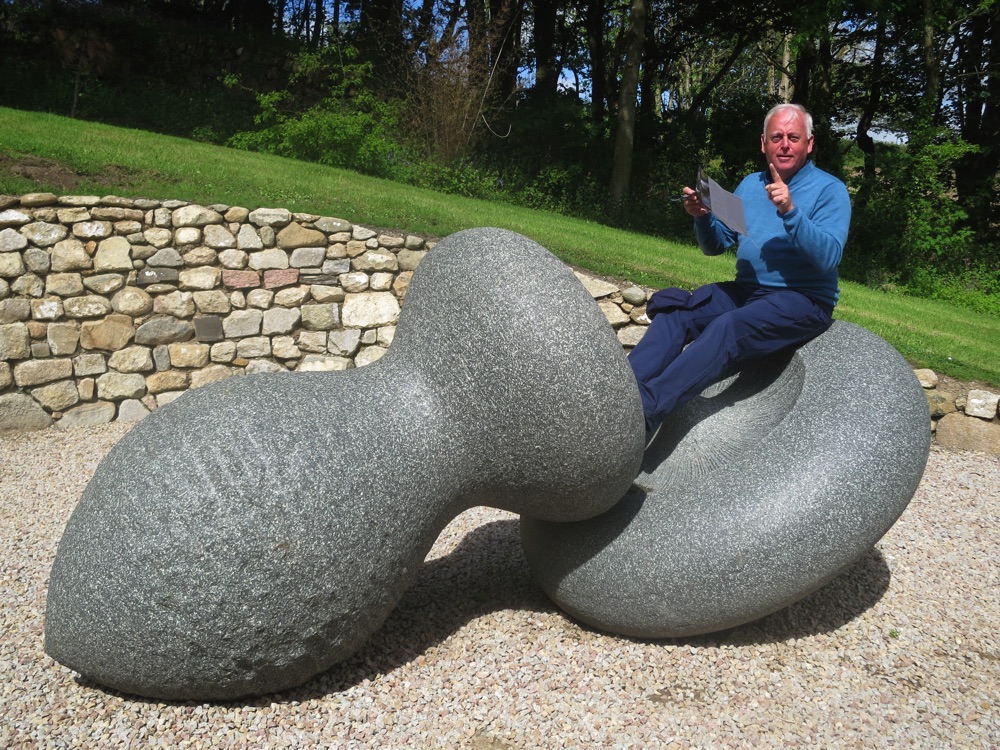
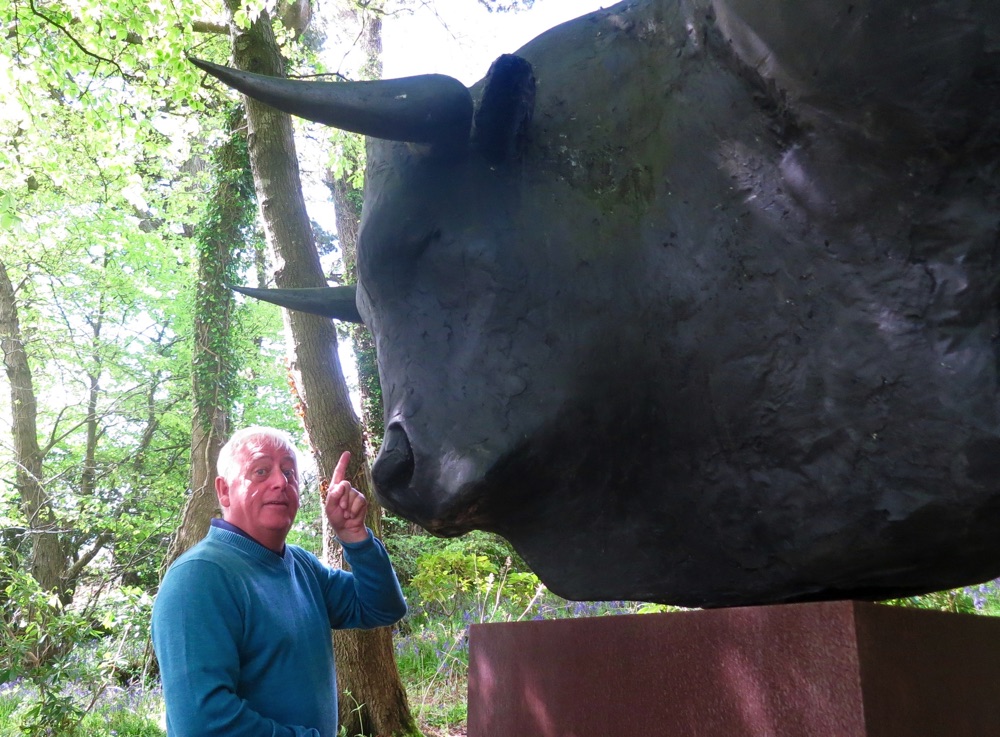
In Cornwall, we also dropped into Caerhays Castle garden with its magnificent magnolia collection.
But the highlight of our time in the West Country, was a special trip we made to the Scilly Isles to visit Tresco Abbey garden,
The weather was too unsettled for us to fly, so we ended up taking the ferry which was a longer journey but enjoyable and perhaps more adventurous.
Director of Tresco, Mike Nelhams, came to Vancouver in the 1990s and I immediately fell in love with pictures of the garden’s beautiful tropical landscape of palms and succulents.
Mike was on hand to greet us and show us around when we finally arrived at the garden after a second, short little boat ride from St. Mary’s.
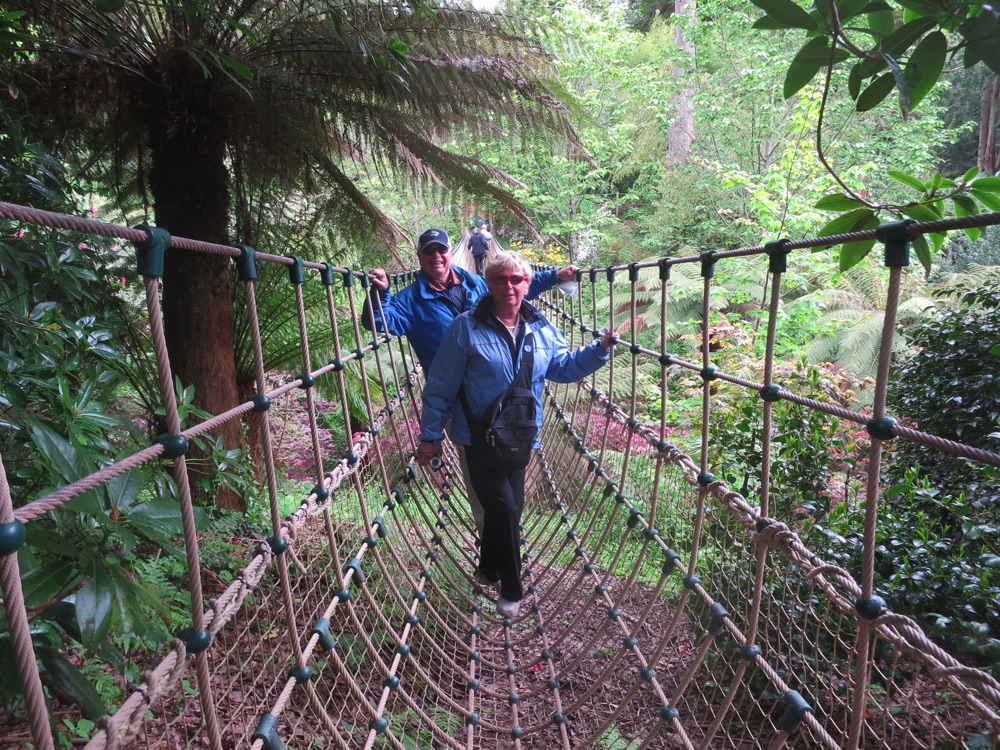
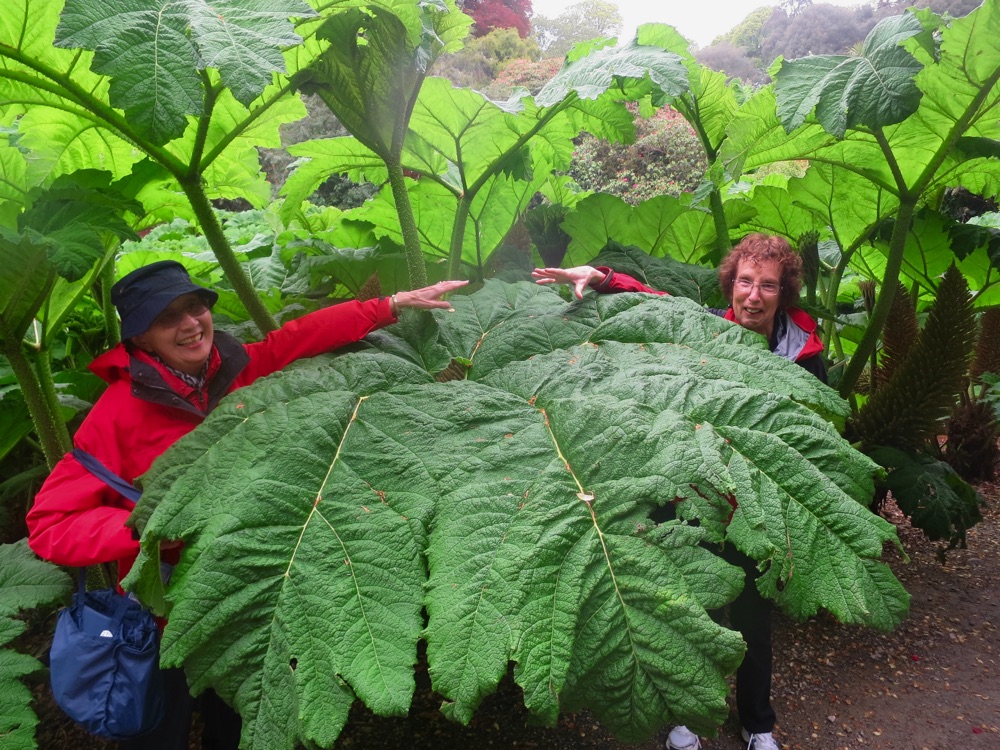
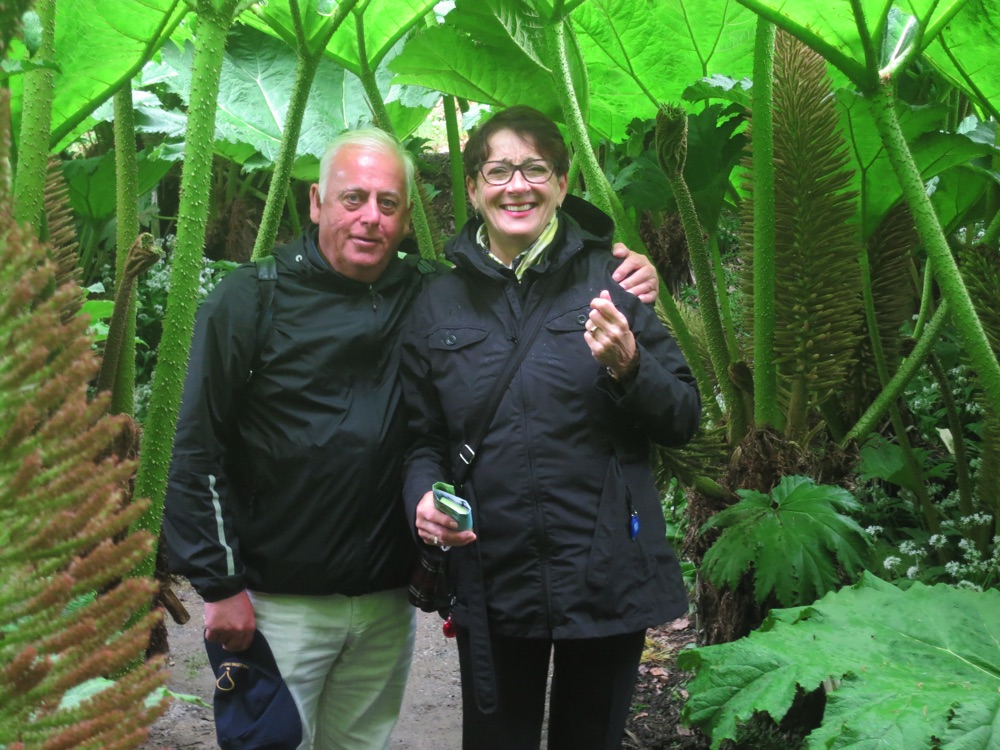
We found the garden contained an astonishing range of quality tropical and subtropical plant material from South America, Africa, Australia and New Zealand – echium, palm, agave, aloe, puya, protea, grevillea, cordyline, eucalyptus, and on and on – but it also had very nicely designed terraces and long paths that create superb framed views and focused vistas.
The garden is protected in the centre by clipped Holm oak hedges and other high trees as well as a hillside that keeps out the chilling winds from the English Channel.
But the garden also enjoys the warming effects of the Gulf Stream which sweeps around the islands and keeps them free of any damaging cold.
We were impressed to find long banks of purple aeoniums and towering puya. But the plant that won everyone’s heart was the silver tree (Leucadendron argenteum) because of the silky-feel of its silvery leaves.
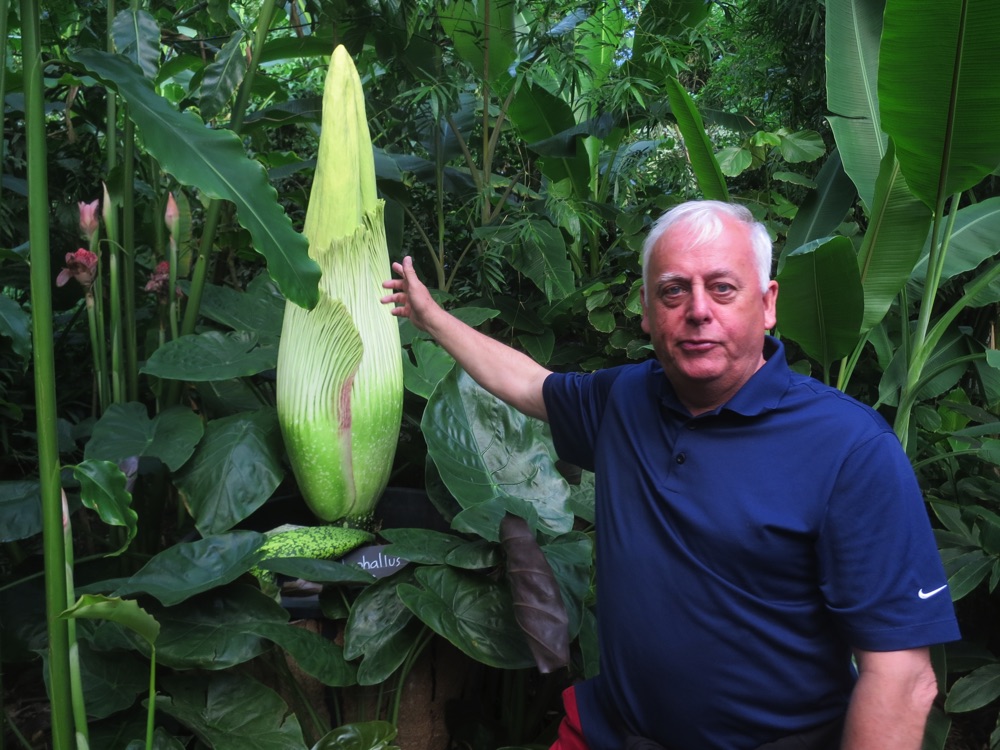
Before leaving Cornwall, we made a special visit to Tintagel to climb the hillside to the ruins of the castle at the top, thought to be the location of Camelot, the seat of King Arthur. It was a blustery day and the climb was a little challenging because of the wind and ocean spray but we made it and the experience was memorable. It was much easy ordering a cream tea and buying pottery in the village later.
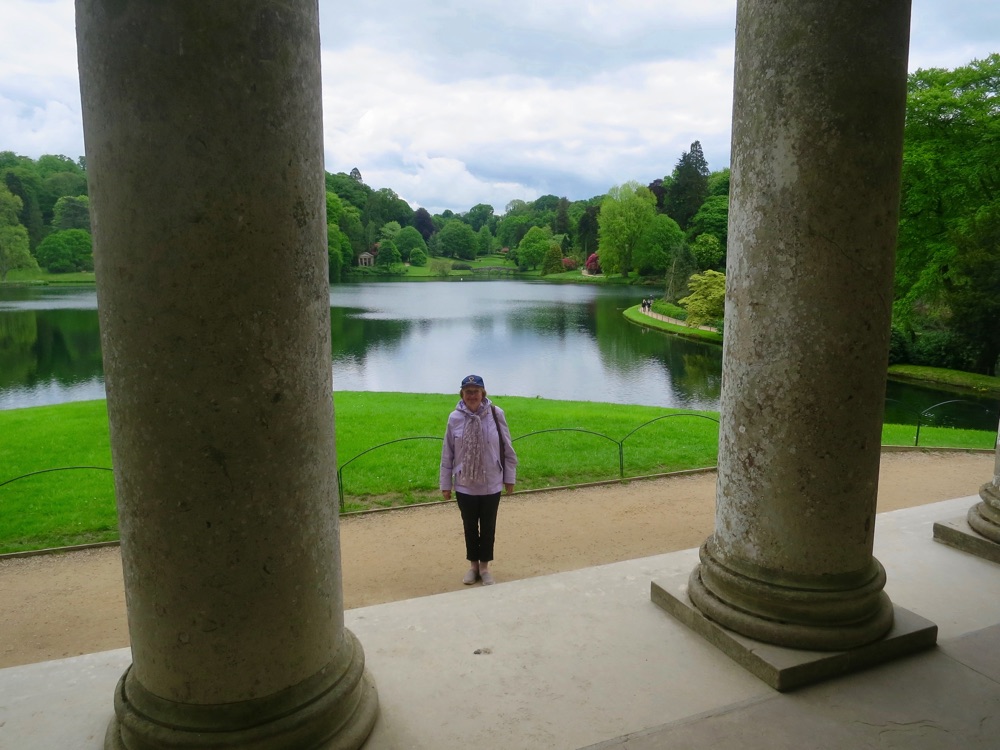
On our way back to London, we stopped for a nice pub lunch and then again in Wiltshire to see the iconic Stourhead garden which we walked completely before continuing on to London.
Back in London, we again stayed in Shepherd’s Bush.
The next day in the morning we went to Wisley Garden and had a lovely time touring the entire garden.
We started out at the Laboratory house with the reflective pond and the bronze Henry Moore statue, The King and Queen in front.
The pavilion at the bottom the pond was smothered in wisteria. It made a beautiful picture looking back at the house.

From there we wandered into the walled gardens, where a test is being conducted to find good alternatives to boxwood in light of the spreading blight problem.
This is precisely the kind of experimentation that makes Wisley a first class horticultural institution – it is always thinking of what gardeners need and how to give them the best answers.
From there we moved up to the Country Garden, past a wonderful display of Joseph Rock tree peony next to wisteria, and then up to the Mixed Borders and up higher into Battlestone Hill to see the flaming Toona sinensis trees and rhododendrons and dove tree and paperbark maples and more.
Then it was into the fruit and vegetable patches and down to the alpine houses which looked as magnificent as ever. This is surely the best alpine display anywhere, even better than the house at Kew.
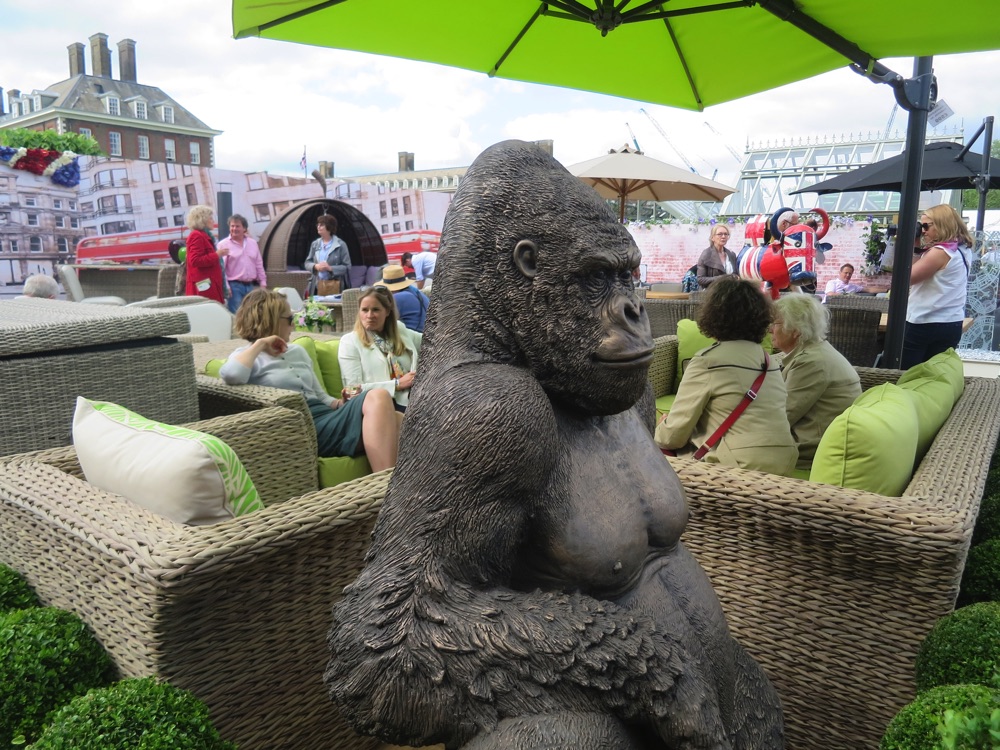
And to finish off, we descended through the famous Wisley rockeries to the Wild Garden, admiring the superb oaks and maples and grand rhododendrons as we moved.
From Wisley, we went back into London and arrived very quickly at Chelsea. As ever, Chelsea was stunning with superb display gardens showing marvellous innovation and a terrific and diverse range of plant material.
One of the most amusing gardens contained mechanical features such as clipped shrubs that rotated and window boxes that rose up from nowhere to fit against windows of an octagonal brick folly tower.
There was also a much celebrated Slavery Garden that focused on the end of some forms of slavery and the need for other forms to be eliminated. The garden had a dead, lifeless area of black gravel in the centre surrounded by railings and doors. On the outside, all this was surrounded by flowers.
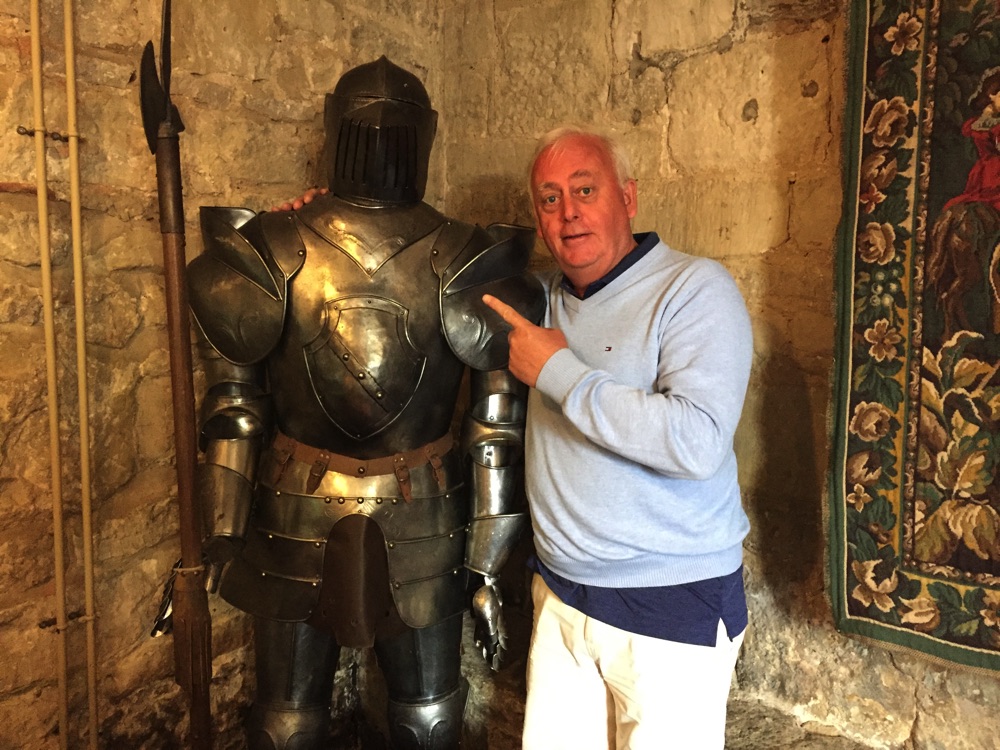
Andy Sturgeon again showed his mastery of garden design with his display garden for the Daily Telegraph. He won Best Garden in Show again for the second time and giving the newspaper its eighth Best in Show win, a record for any sponsor.
The flower, fruit and plant exhibits inside the big tent were as spectacular as usual. I especially loved the show of new allium hybrids.
The City of Birmingham came up with an amazingly colourful display on a theme of the eye of the needle. There were giant silver needle eyes dotted through the flower garden and numerous microscopes around the display.
Look into the microscope and you see the world floating in the eye of the needle. the microscope and you see the world floating in the eye of the needle.
